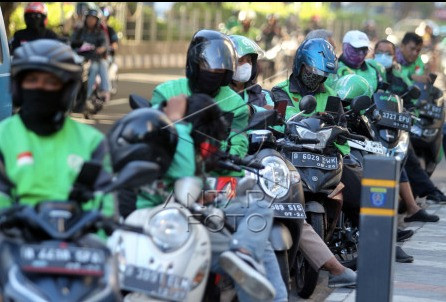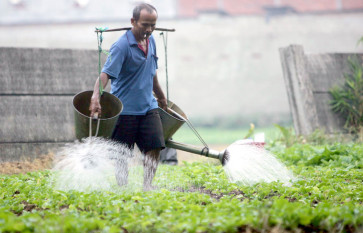Raising farmer productivity key to achieving food security
Change Size
 Green city: A farmer waters his vegetables in Semanan, Kalideres, West Jakarta recently. Many farmers rent idle land in Jakarta owned by big companies and turn it into productive plots by planting rice and various vegetables. Such land, however, is getting more and more scarce. (The Jakarta Post/R. Berto Wedhatama)
Green city: A farmer waters his vegetables in Semanan, Kalideres, West Jakarta recently. Many farmers rent idle land in Jakarta owned by big companies and turn it into productive plots by planting rice and various vegetables. Such land, however, is getting more and more scarce. (The Jakarta Post/R. Berto Wedhatama)
T
he chances are that a predominant portion of food you relished for breakfast today has come from smallholder farmers. In Indonesia, 93 percent of all farmers are smallholders, whose landholding averages a modest 0.6 hectares.
For comparison, the average farm size in the United States is 180 ha. Such small landholding often makes them vulnerable to economic shocks and least prepared for the era of climate change. Almost one-fifth of the smallholder farmers in Indonesia already lives below the national poverty line. This must change.
Transforming smallholder agriculture is vital for Indonesia’s economic growth, sustainability and food security. It is, nonetheless, a challenging endeavor. Many variables that affect smallholders are beyond their control, such as the price that they get for their produce and the vagaries of weather. Controllable variables such as yield improvements are hard to accomplish at scale due to the fragmented nature of smallholder agriculture. But Indonesia has overcome such challenges in the past.
Indonesia, which was the largest rice importing nation on the world market, in 1985 Indonesia achieved rice self-sufficiency. However, over the past few decades the country has again depended on rice imports, though the volume fluctuated according to weather conditions.
Indonesia can now repeat that feat through sustainable intensification. Focusing on bridging the farm yield gaps — the difference between farmers’ yields and what is attainable for a given region — is a great place to start.
Start with the yields of rice and coffee, both predominantly smallholder crops. While Indonesia’s per hectare rice yield of 4.7 tons/ha is not bad in comparison with other developing countries, there exists a considerable variation among provinces, ranging from 5.48 tons/ha in East Java to 2.63 tons/ha in Central Kalimantan.
For coffee, the widely reported yield figure of around 700 kilograms/ha is not just low comparing with other coffee growing nations, but here too considerable intraregional yield difference exists, ranging from 700 kg/ha in Sumatra to 200 kg/ha in Maluku and Papua.

















